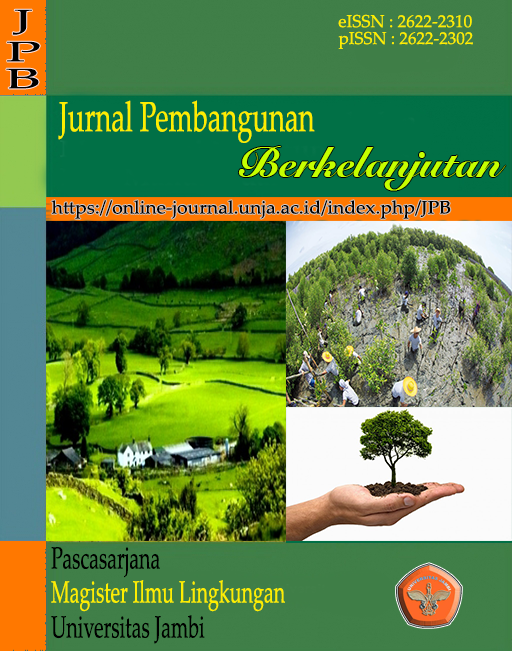the Integrasi Program Berkelanjutan Dalam Penanganan Kawasan Permukiman Kumuh di Kecamatan Tungkal Ilir
DOI:
https://doi.org/10.22437/jpb.v3i2.10090Keywords:
Integrasi, Program, Berkelanjutan, KumuhAbstract
The area of ​​the slum area in Tungkal Ilir District, Tanjung Jabung Barat Regency is 225.4 ha. The condition of buildings, environmental roads, environmental drainage, clean water, sanitation, solid waste and fire protection, are indicators of slum levels. In accordance with these indicators, the relevant Regional Apparatus Organizations (OPD) carry out programs in efforts to deal with slums. The purpose of this study is to analyze the effect of slum settlement management programs on the sustainability of slum area handling programs. The sampling method used is purposive sampling with 100 community respondents in slum locations and Stratified sampling with 30 ASN respondents, this study uses questionnaires and interviews with related parties in data retrieval. Analysis test uses SEM (Structural Equation Modeling) method and data processing using SmartPLS (Partial Least Square) software. The results showed the t-statistic for the Integration Program variable towards the Sustainable Cities variable was 2.185> t-statistic (1.96). The original sample estimate value shows a positive value (0.199). which shows that the relationship pattern of the integration of the program handling slum areas with the sustainability of the program is positive, with a moderate level. The results show that the integration of the program indirectly affects sustainable cities through community participation and slum areas that have not been implemented optimally and tend to be in the middle so that programs and activities that are integrated and synergized by the Regional Government in implementing sustainable cities still need to be implemented.
Keywords: Integration, Sustainable, Handling, Slums.
Downloads
Downloads
Published
How to Cite
Issue
Section
License
Copyright (c) 2020 Jurnal Pembangunan Berkelanjutan

This work is licensed under a Creative Commons Attribution 4.0 International License.
1. Authors retain copyright and grant the journal right of first publication with the work simultaneously licensed under a Creative Commons Attribution 4.0 International License that allows others to share the work with an acknowledgement of the work's authorship and initial publication in this journal.
2. Authors are able to enter into separate, additional contractual arrangements for the non-exclusive distribution of the journal's published version of the work (e.g., post it to an institutional repository or publish it in a book), with an acknowledgement of its initial publication in this journal.
3. Authors are permitted and encouraged to post their work online (e.g., in institutional repositories or on their website) prior to and during the submission process, as it can lead to productive exchanges, as well as earlier and greater citation of published work (The Effect of Open Access)











